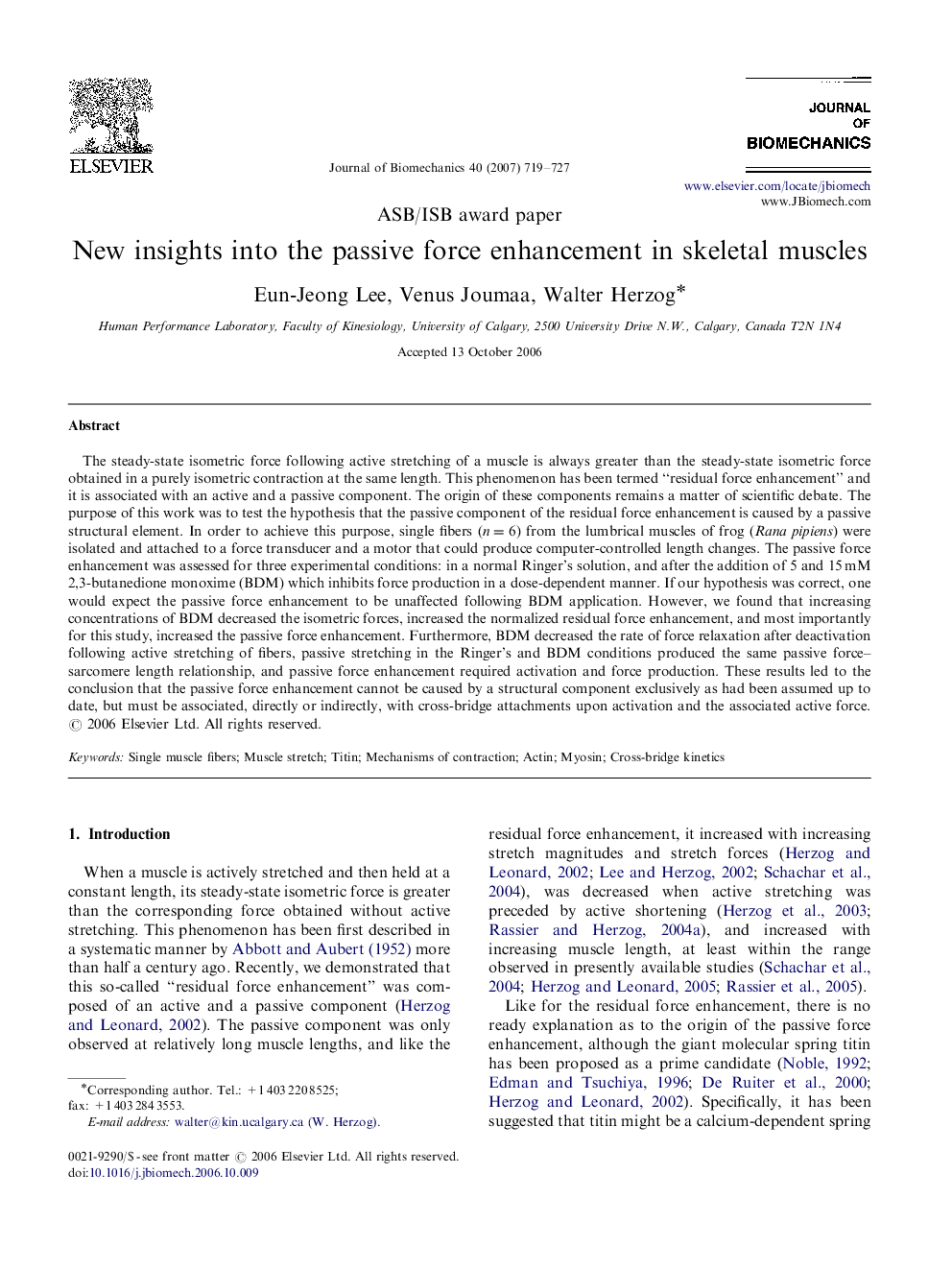| کد مقاله | کد نشریه | سال انتشار | مقاله انگلیسی | نسخه تمام متن |
|---|---|---|---|---|
| 874624 | 910344 | 2007 | 9 صفحه PDF | دانلود رایگان |

The steady-state isometric force following active stretching of a muscle is always greater than the steady-state isometric force obtained in a purely isometric contraction at the same length. This phenomenon has been termed “residual force enhancement” and it is associated with an active and a passive component. The origin of these components remains a matter of scientific debate. The purpose of this work was to test the hypothesis that the passive component of the residual force enhancement is caused by a passive structural element. In order to achieve this purpose, single fibers (n=6n=6) from the lumbrical muscles of frog (Rana pipiens) were isolated and attached to a force transducer and a motor that could produce computer-controlled length changes. The passive force enhancement was assessed for three experimental conditions: in a normal Ringer's solution, and after the addition of 5 and 15 mM 2,3-butanedione monoxime (BDM) which inhibits force production in a dose-dependent manner. If our hypothesis was correct, one would expect the passive force enhancement to be unaffected following BDM application. However, we found that increasing concentrations of BDM decreased the isometric forces, increased the normalized residual force enhancement, and most importantly for this study, increased the passive force enhancement. Furthermore, BDM decreased the rate of force relaxation after deactivation following active stretching of fibers, passive stretching in the Ringer's and BDM conditions produced the same passive force–sarcomere length relationship, and passive force enhancement required activation and force production. These results led to the conclusion that the passive force enhancement cannot be caused by a structural component exclusively as had been assumed up to date, but must be associated, directly or indirectly, with cross-bridge attachments upon activation and the associated active force.
Journal: Journal of Biomechanics - Volume 40, Issue 4, 2007, Pages 719–727